
Hey AYA-ji, that Begonia corner inside the Jindai Botanical Garden greenhouse is dazzling—those leaves really sparkle!”

Indeed. Those are Rex Begonias—a flagship of foliage plants where the leaves, not the flowers, take center stage. Color, pattern, shape—every leaf is a piece of art.”

Then please teach me how to tell the varieties apart—and the basics for growing them at home!”
- Why the Greenhouse Begonia Display Is Special
- What Is a Rex Begonia? Key Traits & Appeal
- Standout Varieties You Can Meet at Jindai
- Tuberous Begonias at the Entrance: A Flower-First Counterpoint
- Soil, Pots & Environment: Building the Basics
- Seasonal Care: Water, Temperature & Feeding
- Propagation & Repotting: Tips for Success
- Pests, Diseases & Common Issues
- Breeding Notes & the Significance of “Jindai Midorihime”
- How to Observe & Record: Photo Notes for Writers
- Conclusion
Why the Greenhouse Begonia Display Is Special
Located in Chōfu, Tokyo, the Jindai Botanical Garden greenhouse lets you enjoy tropical and subtropical plants regardless of season or weather. The Begonia display area is especially popular for experiencing the “art of leaves.” Rex Begonias reveal metallic silver flecks, deep crimson and purple shadows, and spiral leaf forms that shift with angle and light. Compared with seasonal outdoor flowers (cherry blossoms, roses, autumn colors), there are fewer in-depth articles—so on-site observations carry extra value, especially if you want to “recreate the look at home.”
What Is a Rex Begonia? Key Traits & Appeal
Rex Begonias trace their roots to mountainous regions from northeastern India to Southeast Asia. They are foliage-first houseplants: silver, green, red, purple, and near-black layers paint painterly contrasts on each leaf. You’ll find satin sheen, velvet textures, and distinctive spirals—forms that stand out even in compact pots. In urban homes and balconies, they serve as “statement greens” that photograph beautifully and feel truly exotic.
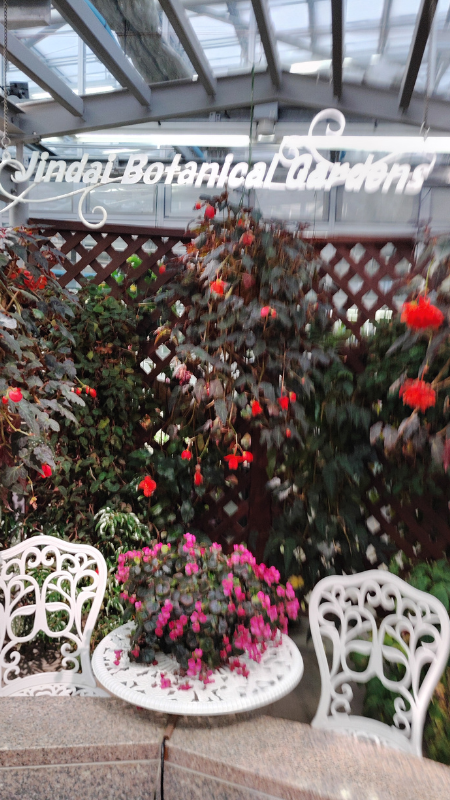
Standout Varieties You Can Meet at Jindai
Begonia rex (Original Species)
The foundation behind many modern cultivars. Its restrained green with ruddy undertones may look modest, yet it radiates a quiet strength—the “source code” from which today’s showier varieties evolved. Seeing the species side-by-side with cultivars helps you notice which traits were carried forward.
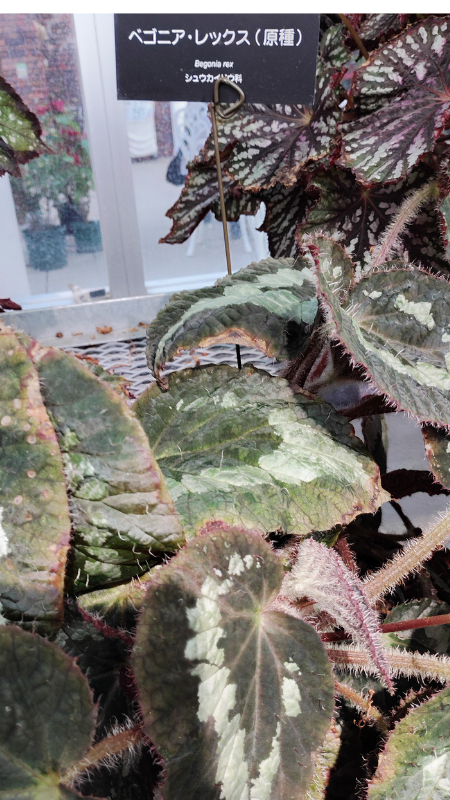
Dewdrop
Cool-toned silver speckles glimmer over deep green, like morning dew. Under gentle morning light it feels refreshing; under stronger afternoon light it can take on a more metallic sparkle. It holds color well in bright, indirect indoor light, making it a reliable display plant at home.
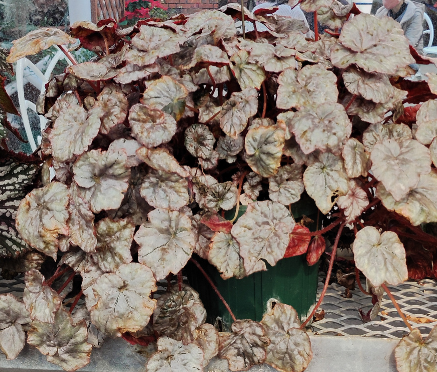
Utakata
A Japan-bred cultivar named after the fleeting “bubbles” of foam. Misty silver patterns drift over pale green, whispering rather than shouting—an ode to subtle gradations. It pairs beautifully with Japanese-style planters and serene interior spaces.
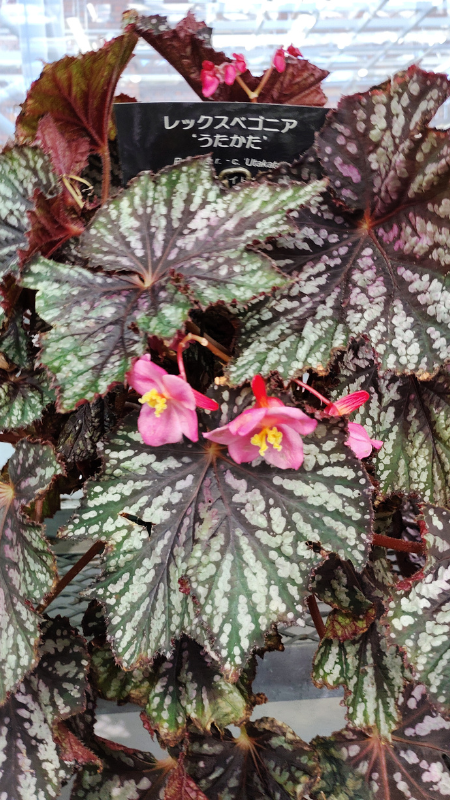
Sea Serpent
Heavy, near-black green leaves undulate like a creature from the deep. It builds structure within a display—perfect for anchoring mixed plantings. Under a spot of light, the leaf’s relief and waves show sculptural depth.
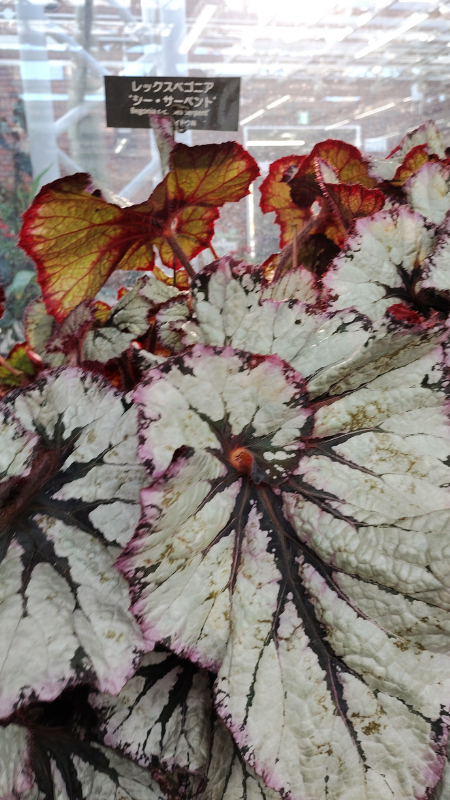
Tsukikage (“Moon Shadow”)
A calm dialogue between deep green and quiet silver. As light levels change, a gauzy “moonlight” seems to veil the leaf. When you tire of bold colors, this is the contemplative plant you return to for long-term companionship.
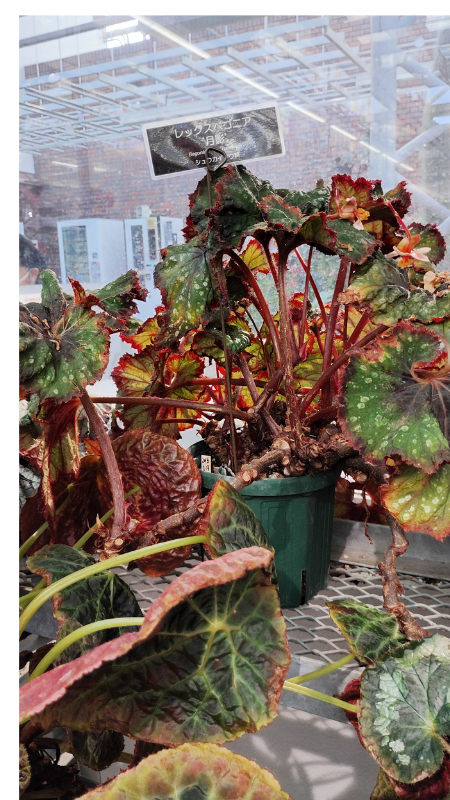
Jindai Midorihime
A Japan-selected highlight from Jindai Botanical Garden itself. Refined silver variegation rests upon deep, composed green—“princessly” in poise and restraint. In a market dominated by imports, this domestic selection widens possibilities for Japan-bred Rex Begonias. Its quiet elegance blends naturally with Japanese interiors. (We plan to append official lineage and release details as they become available.)
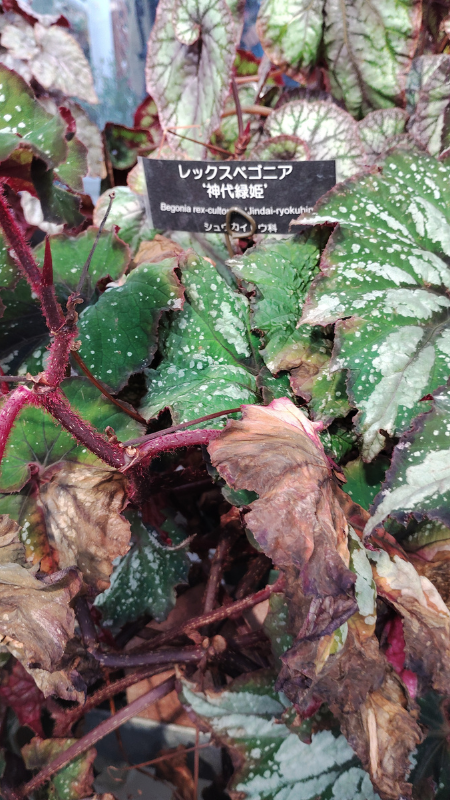
Tuberous Begonias at the Entrance: A Flower-First Counterpoint
Near the entrance, you’ll often meet large-flowered tuberous Begonias in bloom. Juxtapose them with leaf-centered Rex Begonias and you’ll appreciate how the same genus can celebrate two very different “beauties”: flowers versus foliage. Observing both sharpens your understanding of Begonia’s breadth and the curatorial choices behind the display.
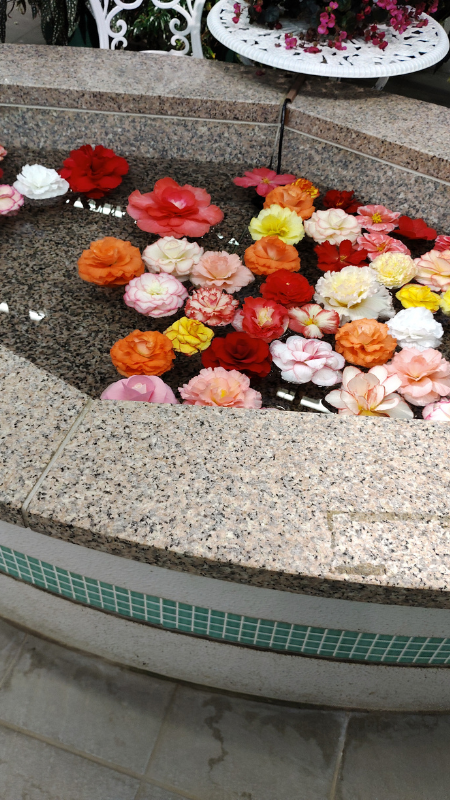
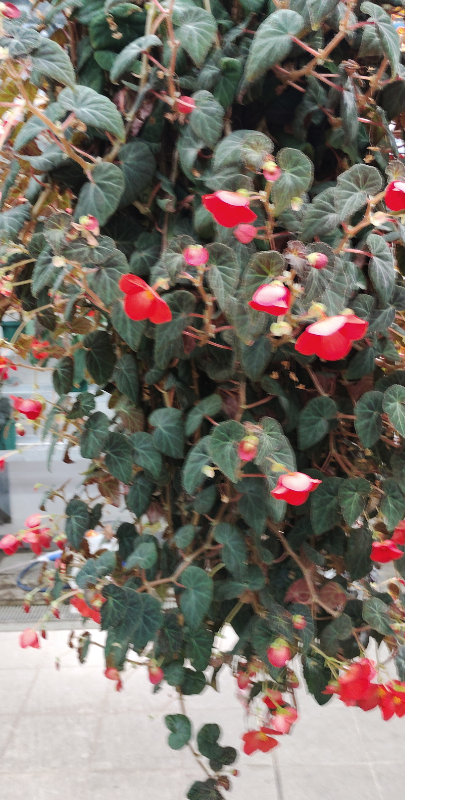
Soil, Pots & Environment: Building the Basics
Light: Avoid direct sun to prevent leaf scorch. Aim for bright, filtered light (sheer-curtain conditions). For crisp silver variegation, provide gentle but not weak light.
Airflow: Stagnant air invites disease. A small fan creating a soft breeze reduces fungal issues and leaf damage.
Soil Mix: Balance drainage and moisture. A practical baseline: 70% general houseplant mix + 20% small pumice + 10% vermiculite; optionally add ~10% leaf mold for moisture retention and micronutrients.
Pots: Plastic holds moisture longer (easier for dry homes). Unglazed clay breathes better (safer against overwatering). Choose based on your environment: worry about over-wet soil → clay; worry about fast drying → plastic.
Water Quality: They tend to like neutral to slightly acidic water. Dechlorinating (letting tap water sit) can reduce leaf edge damage.
Seasonal Care: Water, Temperature & Feeding
Spring (growth resumes ~≥15 ℃): Water with “rhythm”—wait until the surface dries, then water thoroughly until it drains. Apply a weak liquid fertilizer every two weeks to stabilize leaf color.
Summer (heat): No direct sun. If you water morning and evening, strengthen airflow. Prefer watering the soil over misting the leaves, which can dull variegation and invite spots.
Autumn (colors sharpen): Day–night temperature swings intensify silver. Switch to a monthly slow-release feed to maintain growth without stretching.
Winter (slowdown): Keep above 15 ℃ indoors. Reduce watering—wait for the surface to dry well, then give a small, careful drink. Avoid heater blasts; aim for 50–60% humidity.
Propagation & Repotting: Tips for Success
Leaf Cuttings: Choose firm, healthy leaves. Make small cuts along the main veins and press the leaf onto a sterile medium (pure vermiculite or cutting mix). Bottom-water to prevent drying; keep in bright, indirect light.
Division: When crowns crowd, divide in spring to early summer. Trim about one-third of old roots and refresh the mix.
Repotting: About once a year. Move up only one pot size to preserve air spaces in the media and reduce the risk of rot.
Pests, Diseases & Common Issues
Leaf Scorch: Browned variegation = light too strong. Increase shade and airflow to lower leaf temperature.
Root Rot: Constant wetness is the classic trigger. Water only after the surface dries; check that drainage holes aren’t clogged.
Fungal Spots: A combo of chill and stagnation. Avoid crowding and keep air moving.
Mites: Dry air favors spider mites. Watch for tiny stippling; rinse them off early or treat promptly with an appropriate miticide.
Breeding Notes & the Significance of “Jindai Midorihime”
Rex Begonia breeding accelerated in 19th-century Europe, yielding today’s dazzling diversity. While Japan’s market has long leaned on imports, domestic selection and breeding are steadily gaining visibility. “Jindai Midorihime,” selected at Jindai Botanical Garden, embodies a design language attuned to Japanese living spaces—quiet elegance over spectacle. As official details (lineage, year, breeder) are confirmed, we plan to update this section. Meanwhile, treat the greenhouse as a living reference: observe, compare, and record for future revisions.
How to Observe & Record: Photo Notes for Writers
The same plant looks different in morning, afternoon, overcast daylight, or under indoor lamps. Capture the same variety under multiple conditions and add “what your eyes saw” in words—readers appreciate that realism. When shooting, pair a plate (name tag) with wide and close shots; crop details of veins, variegation edges, and surface texture (velvet vs. metallic sheen) to clarify differences among cultivars.
Conclusion
Jindai’s Rex Begonia display spans the species’ quiet beauty, the sparkle of Dewdrop, the festive flair of Merry Christmas, the Japanese sensibilities of Utakata and Tsukikage, and the domestically selected “Jindai Midorihime.” With the care notes here—light, airflow, soil, watering rhythm, seasonal routines, propagation, and troubleshooting—you can bring a slice of that greenhouse magic home. Add your photos, and this becomes a reference piece that resonates with local readers and plant lovers abroad alike.

